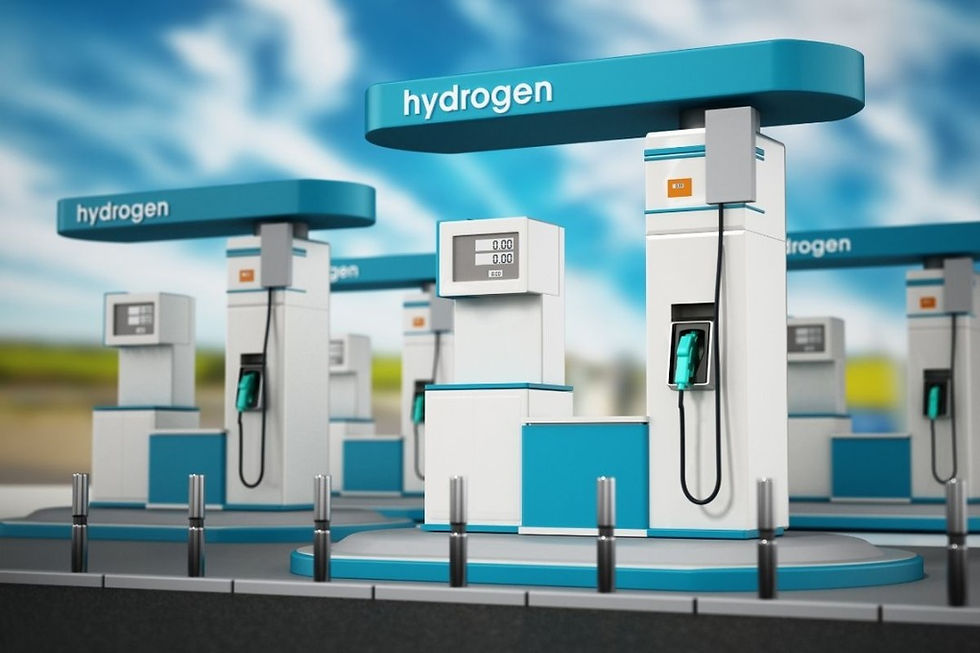6 Current Trends in the Automotive Industry
- Heather L. Lee

- Aug 5, 2024
- 4 min read
Electric vehicles

The Environmental Protection Agency (EPA) predicts that 56% of light trucks and cars will be fully electric by 2032. Another 13% will be plug-in hybrids. This doesn’t quite get to their proposed 67% fully electric, but it’s close.
The main problem with getting electric vehicles on the road lands on the consumers. And that’s the reason for plug-in hybrids. This seems to be a gateway for drivers to explore electric, without giving up on gas. Just be aware, some of these plug-ins are minivans and SUVs that can go through gasoline like water- very expensive water.
Consumers have concerns about manufacturing of lithium-ion batteries, electric infrastructure, and increased costs. Manufacturers are striving to address these concerns and put out more EV options to entice more buyers to make the leap to EV. The government is also offering tax credits for consumers and is considering incentives for manufacturers to increase EV production.
Autonomous vehicles
Autonomous vehicles, also known as self-driving, use technology to either partially or fully remove the need for human interaction to drive the vehicle. You may already be using some autonomous features. Advanced Driver Assist Systems (ADAS) are standard in many vehicles and include lane departure warnings, automatic high beams, and automatic emergency braking to name just a few.
The Society of Automobile Engineers (SAE) has created a graphic describing the different levels of automation from 0 (no automation) to 5 (fully automated).

As these vehicle systems continue being built and tested, regulatory and consumer concerns are being addressed by manufacturers and by agencies such as the National Transfer Safety Board and the National Highway Traffic Safety Administration.
Connected cars

With cars having infotainment systems that connect to Apple Play or Android Auto since 2010, cars are more connected than ever. While this does have its advantages with handsfree phone conversations and the ability to listen to your personal playlist while driving, there are some drawbacks. And you probably have no idea that they are occurring.
Every time you start your car, the vehicle sends information back to the manufacturer. Some of it is important data related to vehicle function. But some of it is data that can be sold to secondary companies. For instance, data about where you are going, when you are going there, and how much time you spend there. This data is usually opt-out, which means you are required to tell them you don’t want your data collected, so you are usually already giving it out before you even drive off the dealership lot.
Here is a podcast we did a couple of years ago explaining this in more detail.
At the very least, you should find out how and what data your vehicle collects data and opt-out if you do not want this data collected.
More vehicles purchased online
Less people are walking around kicking tires on a dealer lot. Now third-party sites like Carvana are racking up the sales. They reported 412,296 sales in 2022 and for the first quarter of 2024, they reported 91,878 sales.
Tesla has closed many of their brick-and-mortar dealers and moved more online. Most manufacturers have enhanced their online marketplace, as well.
Not only is this method of searching for vehicles more convenient, it opens up more options to the buyer and saves time. Not a bad trend, honestly.
Semiconductor chip shortage
Almost every computing device requires a semiconductor chip. This makes semiconductors now the most important commodity for growth, according to Global Data TS Lombard.
During the pandemic, the need for cars dropped and so manufacturers stopped ordering semiconductors since they weren’t building as many cars. Even though the automotive demand returned, the supply of chips couldn’t keep up. Unfortunately, automotive makers were less of a priority than smartphones and cloud computing devices.
As of mid-2023, the chip shortage has mostly improved. But several manufacturers have concerns about future shortages and it is estimated that the 2020-2022 shortage has affected the auto industry vehicle production and set it back by 8-10 years.
Hydrogen Fuel

Electric battery-powered vehicles aren’t the only combustion engine alternative. Fuel-cell electric vehicles (FCEVs) gain power through a fuel stack that feeds on hydrogen and oxygen to create electricity. Instead of re-charging the battery, it is refueled with hydrogen. The best part? The only by product is water. There are no carbon monoxide emissions. Hydrogen fuel has about the same range as gasoline engines, 300-400 miles to a tank.
One major hiccup is the lack of fueling stations. As of 2023, there were only 59 retail fueling stations in the U.S. Unfortunately, earlier this year Shell closed all its hydrogen fueling stations in California. However, there are plans for at least 50 more across the U.S. according to the Department of Energy and California has proposed to build 1,000 hydrogen fueling stations by 2030.
As fueling stations increase, manufacturers are producing more FCEVs, so be on the lookout for more options. The FCEV market is predicted for a compound annual growth rate of 43% from 2023 to 2032.
These trends will likely continue and we can't wait to see what the future brings. What trends are you seeing?





Comments